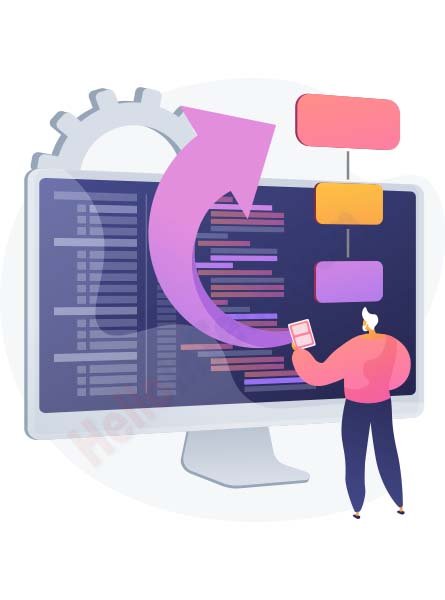Security Patches and Upgrades
Implementing security updates and patches to address vulnerabilities and protect user data from potential threats or breaches.
App Updates and Maintenance
We make sure that the app works well with our helpful maintenance services. We monitor how it’s doing, fix problems quickly, and update things to ensure it works the best it can.
Bug Fixes and Issue Resolution
Identifying and addressing software bugs, glitches, or performance issues reported by users or detected through monitoring systems.
Operating System and Device Compatibility
Ensuring the app remains compatible with the latest operating system versions, device models, and hardware changes to maintain optimal functionality.
Performance Optimization
Continuously optimizing the app’s performance, including speed, responsiveness, and resource usage, to provide a smoother user experience.
App Store Compliance and Guidelines
Ensuring the app complies with app store guidelines, regulations, and policies to avoid rejection or removal from app stores.
Feature Enhancements and Additions
Introducing new features, functionalities, or improvements based on user feedback, market trends, or technological advancements to enhance the user experience.

App Monitoring and Performance Analysis
App monitoring and performance analysis involve various services to ensure that mobile applications run smoothly and efficiently. Our key services within app monitoring and performance analysis include.
Real - Time Monitoring
Constantly monitoring the app’s performance in real-time to identify issues like crashes, slow response times, or errors as they occur.
Performance Metrics Tracking
Tracking and analyzing various metrics such as app load times, latency, CPU and memory usage, network requests, and battery consumption to assess overall performance.
Crash Reporting and Analysis
Utilizing crash reporting tools to identify and prioritize fixes for critical app crashes, understanding the root causes, and ensuring swift resolution.
User Experience Monitoring
Collecting user data and feedback to understand their experience, behavior, and interactions within the app, and using this data to improve usability.
Resource Utilization Analysis
Analyzing how the app utilizes device resources like CPU, memory, and network bandwidth to optimize performance and minimize resource consumption.
App Store Optimization (ASO)
App Store Optimization (ASO) is the process of optimizing a mobile application’s visibility and discoverability on platforms such as Apple’s App Store and Google Play. It encompasses various strategies aimed at enhancing the visibility and discoverability of mobile apps within app stores.
Keyword Research and Optimization
Identifying relevant keywords and phrases that users are likely to search for when looking for apps similar to yours. Optimizing app titles, descriptions, and keywords to improve search ranking within app stores.
App Title and Description Optimization
Crafting compelling and descriptive app titles and descriptions that accurately represent the app’s features, functionality, and value proposition while incorporating relevant keywords.
Visual Assets Optimization
Optimizing visual assets like app icons, screenshots, and preview videos to attract users’ attention, highlight key features, and create a visually appealing storefront presence.
Localization and Internationalization
Localizing app metadata (title, description, keywords) and visual assets to target different regions and languages, increasing the app’s global reach and appeal.
App Ratings and Reviews Management
Encouraging positive user reviews and ratings, responding to user feedback, addressing concerns, and actively managing app store reviews to improve app credibility and trustworthiness

App Version Control
App version control involves managing different iterations or versions of an application throughout its lifecycle. This process ensures proper coordination among team members, maintains code integrity and facilitates the efficient release of updates and new features.
Versioning Strategies
Implementing a versioning strategy to label and manage different iterations of the app (Ex: Semantic Versioning: MAJOR.MINOR.PATCH) to signify changes and updates.
Code Branching and Merging
Utilizing version control systems (e.g., Git) to create branches for development, testing, and production environments, merging changes between branches, and ensuring version consistency.
Version Release Planning
Strategizing and planning the release schedule for different versions, considering feature enhancements, bug fixes, and major updates to align with user expectations and business objectives.
Change and Release Management
Managing changes made in each version, documenting features, enhancements, and bug fixes, and preparing release notes to communicate changes to stakeholders and users.
Backward Compatibility
Ensuring backward compatibility when introducing new features or updates to prevent disruptions for existing users and devices running older versions of the app.
Rollback Plans and Contingency
Creating contingency plans and rollback strategies in case an update or new version encounters unexpected issues, ensuring a smooth transition back to a stable version.
Beta Testing and Version Deployment
Conducting beta testing phases to gather feedback on new versions before the official release, iterating based on user input, and deploying versions to production.
iOS
iOS, developed by Apple Inc., doesn’t serve as a dedicated app management system. However, on iOS devices like iPhones and iPads, users can efficiently organize and manage their apps through various built-in features and settings.
Home Screen Organization
Users can organize and manage their apps directly on the home screen by creating folders, rearranging icons, and customizing the layout to suit their preferences.
App Installation and Deletion
Users can easily install apps from the App Store, and uninstall them by pressing and holding an app icon until it enters the editing mode. This allows users to delete apps they no longer need.
App Updates
The App Store provides updates for installed apps. Users can choose to update apps manually or enable automatic updates, ensuring they have the latest features and security patches.
App Settings
Each app has its settings accessible through the iOS Settings app. Users can configure app-specific preferences, adjust notifications, and manage permissions.
App Library (iOS 14 and later)
Introduced in iOS 14, the App Library automatically organizes apps into categories, making it easier for users to find and access their apps without cluttering the home screen.
Search and Siri Suggestions
Users can utilize the iOS search functionality to quickly find and launch apps. Siri also suggests apps based on usage patterns, making app management more intuitive.
App Restrictions and Parental Controls
iOS includes built-in features for setting restrictions and parental controls. Users can manage access to specific apps, control in-app purchases, and restrict content based on age appropriateness.
Android
Android, as a mobile operating system, provides several features and settings for users to manage and organize their applications efficiently.
Home Screen Customization
Android allows users to customize their home screens by arranging app icons, creating folders, and adding widgets for quick access to apps.
App Drawer
Apps on Android are typically organized in an app drawer, providing a centralized place to view and launch all installed applications.
App Installation and Uninstallation
Users can install apps from the Google Play Store and other sources. Uninstalling apps is straightforward through the device settings or directly from the app drawer.
App Updates
The Google Play Store notifies users of available app updates. Users can choose to update apps individually or enable automatic updates for all installed applications.
App Permissions
Android allows users to manage app permissions individually. Users can control which permissions each app has access to, enhancing privacy and security.
Google Play Protect
Google Play Protect is a built-in security feature that scans apps for potential threats, ensuring a secure app environment on Android devices.
App Settings
Each app has its settings accessible through the device settings menu. Users can configure app-specific preferences, adjust notifications, and manage permissions.





